In September and October 2020, Igor Matonda (Kinshasa University) carried out a BantuFirst archaeological fieldwork mission along the Lower-Kasai River between its confluence with the Kwilu River and the city of Panu. He was accompanied by Suzanne Bigohe Mugisha (Kinshasa University), Clément Mambu (Institut des Musées Nationaux du Congo) and Isidore Nkanu, our driver and archaeological fieldwork assistant since many years. The goal of their expedition was to find traces of the first human settlements in what the linguists of our team had identified as the West-Coastal Bantu homeland, a region that is hardly known archaeologically. The strategy was to stop at the accessible banks and villages located mostly on the left bank of Lower-Kasai. The fieldwork combined interviewing villagers, examining erosion surfaces (concessions inside the village, paths and fields, river banks) and small-scall excavations (80x120m, 1x2m or 1x1m). In the villages, they collected information on the production and circulation of pottery and on ancient settlements. They focused primarily on potsherds with shapes and / or designs to the detriment of less diagnostic ones and artifacts considered to be recent, such as fragments of glass, pearls and imported porcelain.
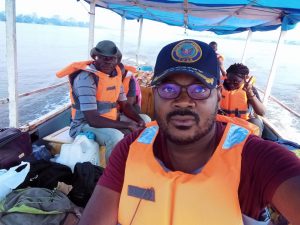 |
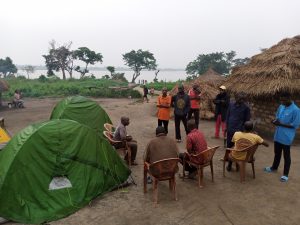 |
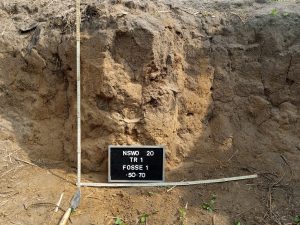 |
| Igor Matonda and his team on the Kasai River
© Igor Matonda, 202O |
Clément Mambu negociating with Nswo village
authorities along the Kasai © Igor Matonda, 2020 |
Discovery of a pit at Nswo
© Igor Matonda, 202O |
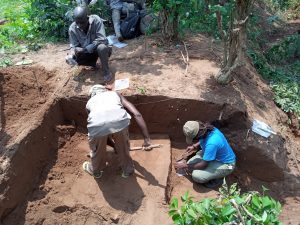 |
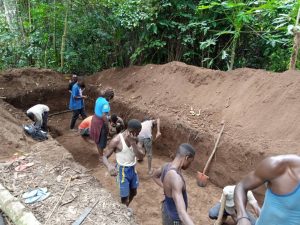 |
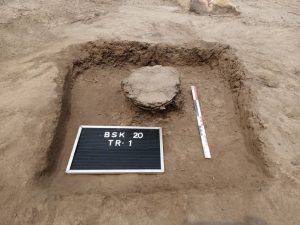 |
| Suzanne Bigohe & co excavating at Ntabitele
© Igor Matonda, 202O |
Excavating in a clay extraction pit at Ngiebun
© Igor Matonda, 202O |
Discovery of the base of a pot at the old village of Bosuka
© Igor Matonda, 202O |